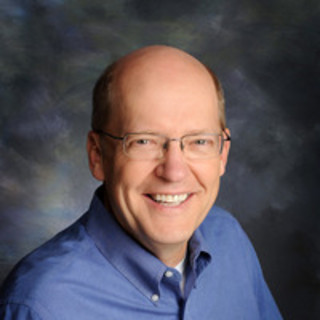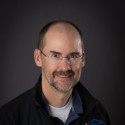Leading up to the end of residency, the typical house officer has made thousands of short-term clinical decisions, usually aided by an algorithm (decision-making tree) engrained after years of studying and training. It’s truly ironic, then, that many residents have not developed an algorithm for making critical long-term decisions — marriage, having children, medical school, specialty selection, and residency Match ranking. The ubiquitous “pros and cons” list is helpful, yet for residents deciding on where to practice (or for practicing physicians considering relocation), making the big decision can be daunting and stress-provoking.
When searching for a future practice site, most residents may not be aware that roughly 20%-50% of physicians end up relocating after their first job post-residency. Recruiters are almost certainly aware of these statistics, yet the searching resident is rarely informed, if ever.
A good recruiter will attempt to educate the searching resident in what to look for in a practice. Sadly, the resident in their final year of training has limited exposure to the workings of a practice or clinic. All too often, residents glean knowledge of how a practice functions from snippets of conversations between physicians that they overhear totally devoid of context. Critical issues such as liability insurance costs, reporting endorsement form (tail coverage) status, salary structure, and call schedule assignment are seldom shared with resident physicians. Oftentimes, staff physicians with behavioral issues are hidden away or shunned. The maxim caveat emptor (let the buyer beware) is never truer for physicians looking to relocate.
A recent poll (4,776 respondents) conducted by Doximity asked physicians, “How did you decide where, geographically, to live and work?” This survey found that 14% chose to live and work where they trained, 48% opted to practice near family and friends, while 16% pursued a unique opportunity, and 10% opted to support their partner’s career.
And it’s not only resident physicians who are impacted by insufficient information on where to practice. Physicians looking to relocate for whatever reason can benefit from a better plan.
After medical school and internship, I practiced as a solo general practitioner for seven years in a rural community prior to entering a residency in ob/gyn. During this time, I observed seven different specialists come to our community and depart. Though not privy to all their reasons, I learned compensation was a common factor. This observation of a “revolving door” tempered my approach to finding a practice location following residency.
My wife and I wanted to live and raise our family in the Midwest. For my part, I wanted to work in a community in which family physicians were practicing obstetrics and would potentially be a source of referrals. The memory of that Sunday morning, when we both sat down at the kitchen table with a map of the U.S. spread before us, is as fresh as yesterday. Our list of states extended from as far west as Nebraska and as far east as Ohio, north to Michigan and south to Kentucky. Armed with that list of 12 states, we then identified the cities that had a population of 10,000-20,000. This list was surprisingly small.
The next step in my search was to consult the American Hospital Association yearbook, which I found in our medical center library, and review the data of the hospitals in those communities, specifically, the number of births. After culling the list, we were left with a dozen potential communities we wanted to investigate further. The final filter was to consult the American Medical Association (AMA) Regional Directory (also found in our medical center library) and create a list of the physicians in those 12 communities. We compared the list of physicians in each community to similar lists from three years prior and six years prior. If we determined there was a “revolving door” pattern in any community, we struck it from our list.
Then I drafted a letter with a copy of my CV and sent it to the administrator of the remaining hospitals on our final list, inquiring about the community’s health care needs. This generated several responses, and I established initial contact with numerous clinics. Six months after our initial scan of the map, I made arrangements to visit and interview at the four selected sites.
There remained four questions that needed to be addressed at each site:
- How was the call schedule arranged and was it flexible?
- What type of malpractice coverage and reporting endorsement (tail coverage) was available for physicians?
- What was the mood and feel of the physicians’ lounge?
- What was the community’s perception of the practice and hospital?
The call schedule issue was easy enough to address with a simple question during the site interview, as was the issue related to liability insurance coverage. The mood of the individual physicians’ lounges held few surprises. Nonetheless, it was beneficial for me to sit back and observe the conversations and banter among physicians at each visit.
Determining the community’s perception, however, required a different approach. To do so, I took advantage of the down time during each site visit to stop at two or three of the local pharmacies and simply ask the pharmacist about the community’s perception of the hospital and clinic, as well as the question, “What percentage of prescriptions filled were written by out-of-town providers?” This gave me a hint as to whether local people were seeking care elsewhere.
What’s more, I visited a couple of hair salons near each hospital, introduced myself to the hairdressers, and asked them about their clients’ perception of the medical community in general. The responses were telling and extremely helpful in completing the picture of the community. In three of the communities, the information was concordant with our impressions. In the fourth community, however, the responses suggested an underlying issue we hadn’t observed, which helped guide our final selection.
In your search for a practice site, perform your own research, and by all means, learn as much as you can about the community you are considering. There’s nothing wrong with utilizing a recruiter, but I would urge you not to hesitate to incorporate a bit of a nontraditional approach to discovering just where to lay down your roots.
What factors did you consider when choosing where to work? Share your experiences in the comment section.
Lloyd Holm is a retired obstetrician who lives in Cottage Grove, Minnesota with his wife, Gretchen. He has authored two novels and a children’s book and his writings have appeared in the Omaha World Herald, The Female Patient, Iowa Medicine, Contemporary OB/GYN, Hospital Drive, the American Journal of Obstetrics and Gynecology, and Obstetrics and Gynecology. While a member of the teaching faculty at the University of Nebraska Medical Center in Omaha, he received the Dean's Award for Excellence in Clinical Education and The Hirschmann Golden Apple Award. Dr. Holm is a 2021–2022 Doximity Op-Med Fellow.
Image by Wanlee Prachyapanaprai / GettyImages







